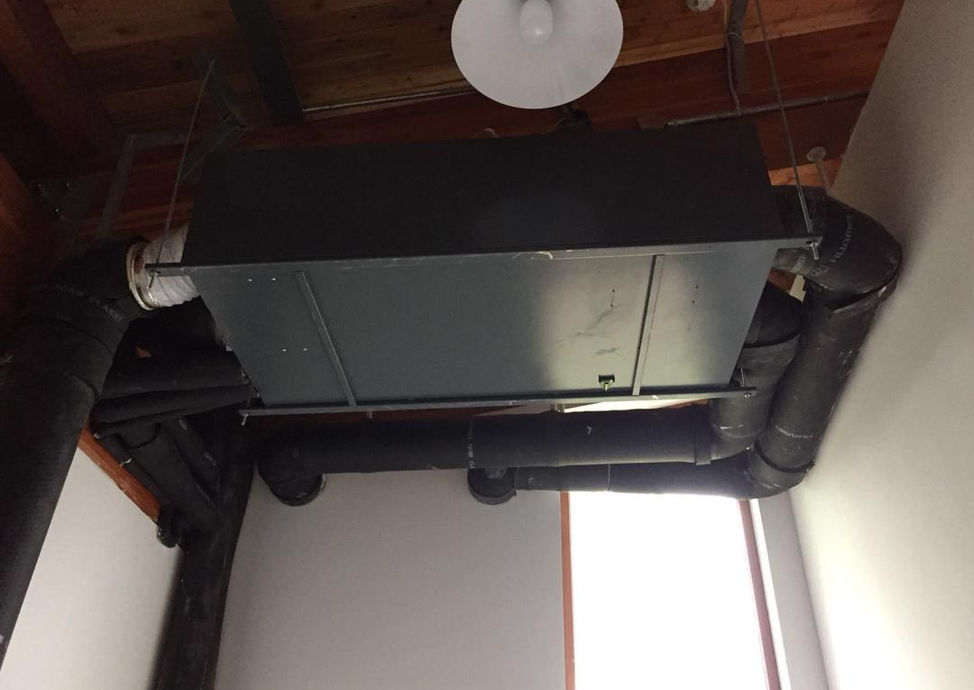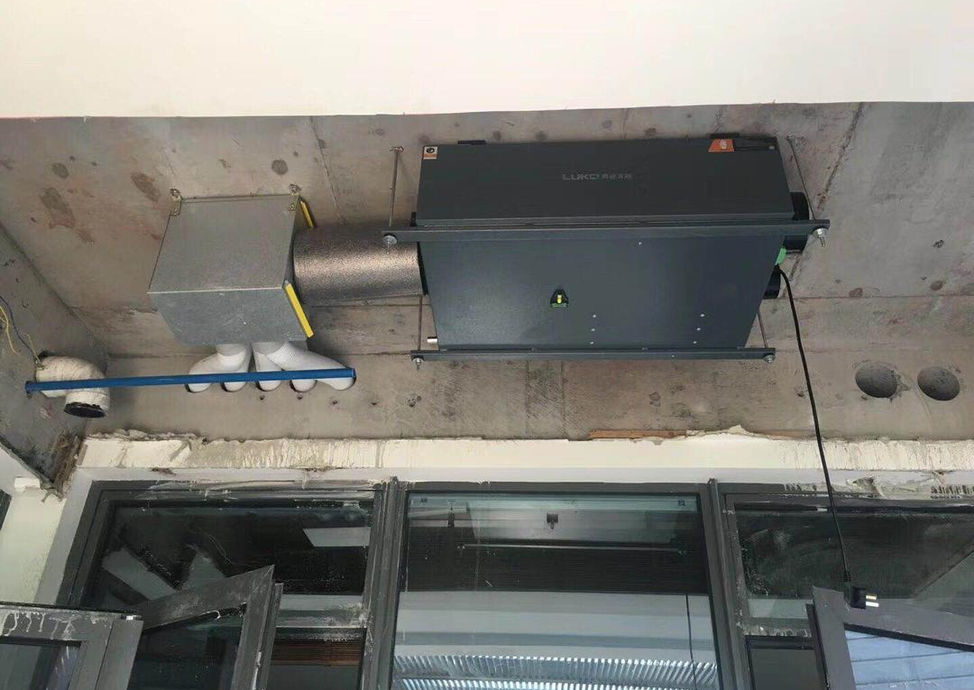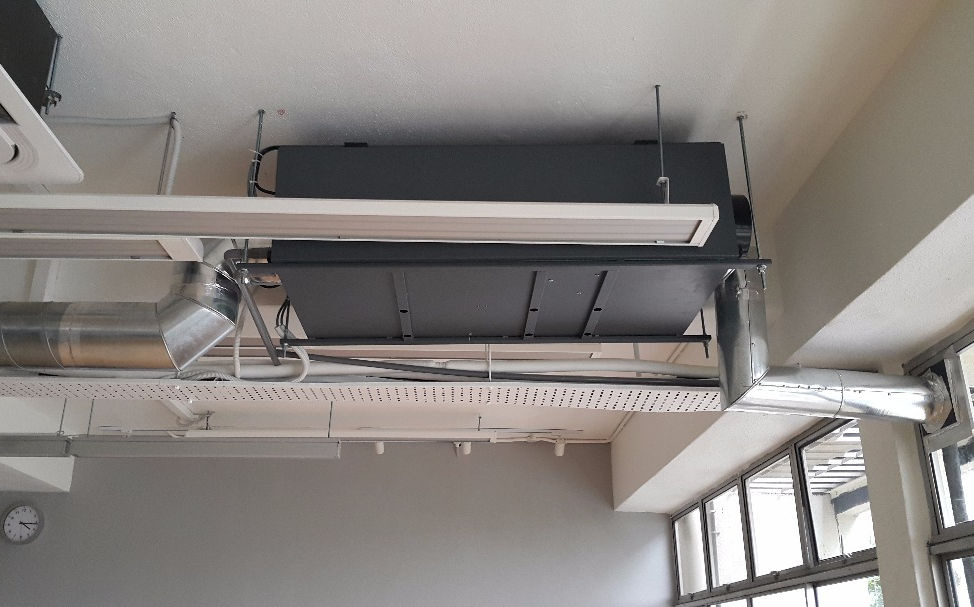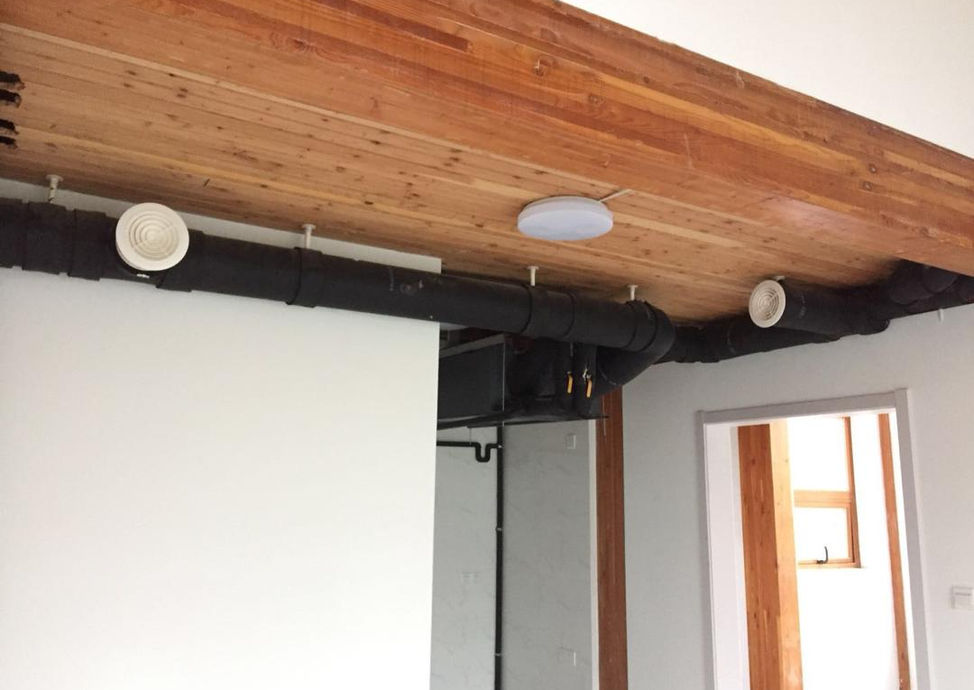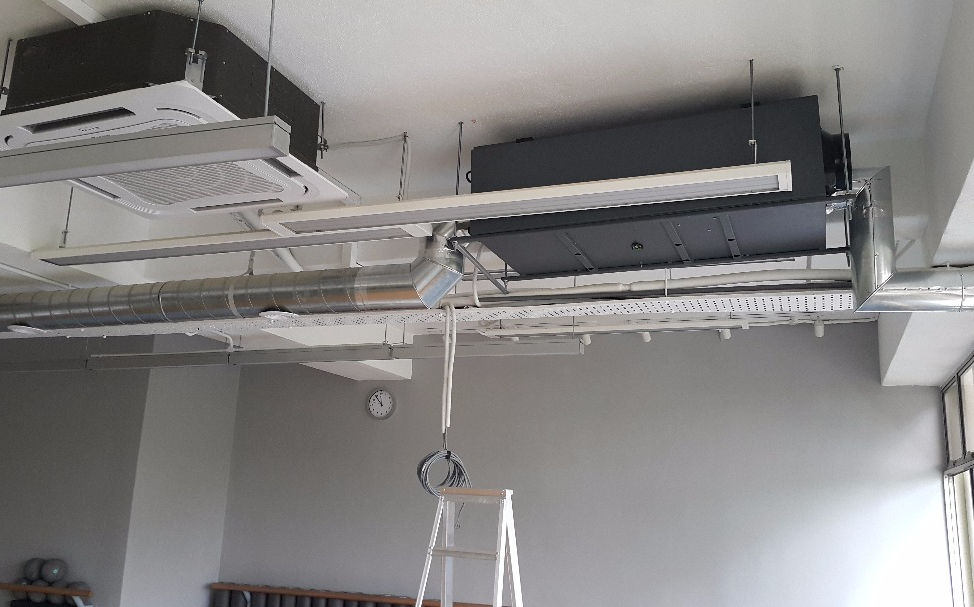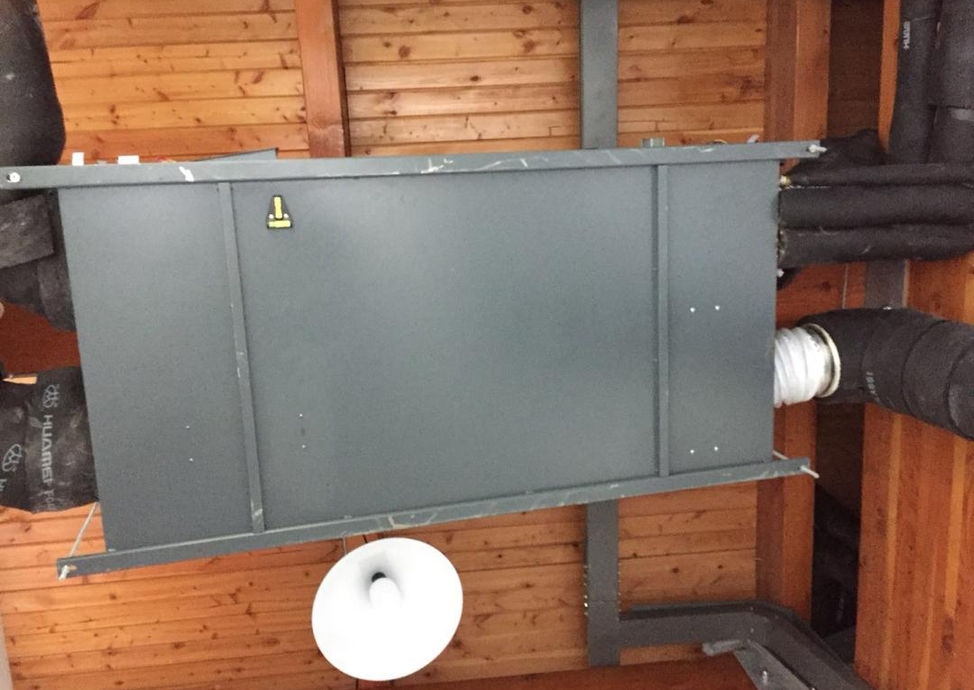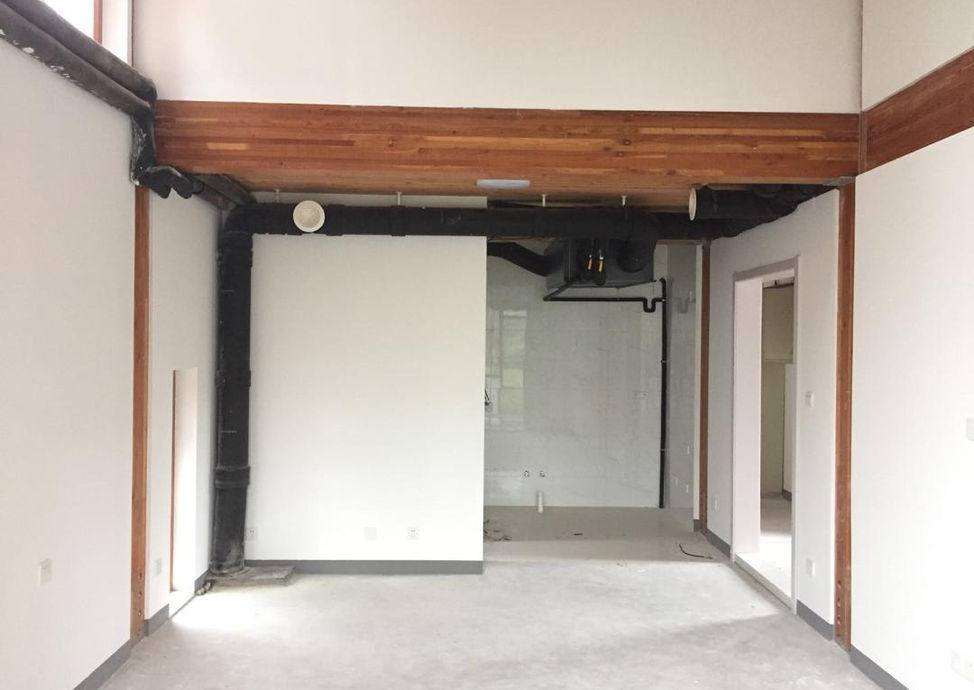LUKO Ceiling Mounted Duct Typed Dehumidifer

LUKO is headquartered in Germany and its research and development team is committed to designing based on ErP (Energy-Related Product) standards. The company focuses on temperature and humidity control, as well as indoor air quality improvement. They emphasize environmental concepts and the development of sustainable systems through excellent technology. LUKO utilizes advanced technology and high-end core components, coupled with intelligent backend management systems, to meet the increasing demand for smart solutions among residential and corporate customers. Their clientele spans over 20 countries and regions worldwide, including Australia, China, Malaysia, Thailand, among others.
The basic principles of air dehumidification and purification.

The LUKO ceiling dehumidifier utilizes a compressor to circulate a refrigerant between the cooling coil and the condenser, creating a temperature difference between the two. A fan draws in humid air into the machine, passing it through the cooling coil where the moisture in the air condenses into droplets on the coil. The machine then enters a defrosting mode, heating the frost back into water, resulting in dry and warm air discharged through the condenser. Through this continuous cycle, the humidity indoors decreases. The machine is also equipped with different levels of filters, ensuring that all incoming air undergoes filtration, removing odors and suspended particles, while ensuring that no pollutants are blown out through the outlet.
Different models offer varying functions and dehumidification capacities

LUKO FD-S Single Duct
The LUKO FD-S series features a single airflow design that draws in fresh outdoor air or indoor air. It first passes through a dual filtration system, then removes moisture from the air, and finally undergoes filtration through an H13 HEPA filter before being released.
You can choose different models based on various wind speeds and dehumidification capacities
Model Max airflow Dehumidify Cap.
(m3/h) (L/D)
-
FD-S28L 350 28
-
FD-S40L 670 40
-
FD-S60L 780 60
-
FD-S100L 1200 100
-
FD-S140L 1350 140
LUKO FD-E HeatExchange
The LUKO FD-E series offers bidirectional ventilation, enabling indoor-outdoor exchange of air with an equal amount of fresh and polluted air exchange. It can achieve positive or negative pressure operation according to customer requirements. The fresh air and exhaust air are completely separated. It incorporates a static heat exchanger with an efficiency greater than 80%, unaffected by the temperature inside the room, significantly reducing the energy required for fresh air and achieving high-efficiency energy savings.
You can choose different models based on various wind speeds and dehumidification capacities
Model Max airflow Dehumidify Cap.
(m3/h) (L/D)
-
FD-E28L 420 28
-
FD-E40L 780 40
-
FD-E60L 850 60
-
FD-S100L 1400 100
-
FD-S140L 1550 140

LUKO FD-S / FD-E Product features include:
-
The product's casing is made of cold-rolled sheet metal welded and sprayed. The product comes with a self-balancing central fresh air intake function to eliminate excessive exhaust gases.
-
Fully automatic fresh air dehumidification. The product operates 24 hours a day, providing continuous functionality.
-
Single installation with a leveling calibration function, ensuring a simpler and more convenient installation process.
-
An additional heater can be installed at the product's outlet to further heat the dry air.
-
The heat exchanger is washable, while the evaporator and condenser are epoxy-coated, providing enhanced corrosion resistance.
-
The condensate water has a positive pressure drainage function, significantly reducing the height of the suspended ceiling.
-
Low-noise, high-static pressure dual-speed or infinitely variable-speed centrifugal fans meet the adjustment and switching of different air volumes and pressures.
-
The heat exchange core of the condensate water adopts an efficient internal thread blue louver, and the condensate water tray uses SUS304 stainless steel.
-
The equipment can be optionally expanded and its system functions extended. Additional features such as HEPA high-efficiency filtration, negative ion, and UV sterilization purification can be added.
-
The equipment uses environmentally friendly refrigerants R410A or R134A for refrigerant filling, and the compressor adopts Panasonic or Embraco.
-
The fresh air purification system integrates fresh air and dehumidification into a single system. It incurs minimal maintenance costs, enhances comfort, and saves energy.
-
The German intelligent control module allows for easy setup and memory storage once configured. It comes with RS485 communication protocol and an intelligent app for control.
-
Stable performance, no cleaning required. The ventilation ducts are designed with streamlined channels, effectively preventing dust accumulation, thereby eliminating the need for regular cleaning of the cross-flow core.
-
The equipment does not involve electronic components; all core programs are integrated into the line control operator. This reduces the failure rate of the product and enhances the user's initial experience.
01
The difference between LUKO dehumidifier and an air conditioner?
Both air conditioners and dehumidifiers operate on the principle of heat exchange, inducing air cooling and condensation of moisture. The heat exchange in an air conditioner is primarily used for cooling and heating. During cooling operation, an air conditioner reduces indoor humidity, leading to a decrease in the dew point inside, resulting in a significant immediate dehumidification effect. This briefly relieves discomfort caused by humid weather. In contrast to an air conditioner, a dehumidifier uses heat exchange exclusively for dehumidification without any additional energy consumption. Also, it does not affect indoor temperature fluctuations. Therefore, when comparing their dehumidification and moisture removal abilities, dehumidifiers are naturally considered more professional and efficient.
03
Air conditioners have dehumidification functions, why can't they replace dehumidifiers?
Firstly, the dehumidification capacity of air conditioners is only around 20% of that of a dehumidifier, but their power consumption is several times higher than that of dehumidifiers.
Secondly, air conditioners are highly susceptible to temperature influence regarding dehumidification. They lower humidity by cooling the air, but their dehumidification effectiveness diminishes significantly when the temperature falls below 20 degrees Celsius. Therefore, when the relative humidity is at its highest during the warmer seasons and temperatures hover around 20 degrees Celsius, air conditioners provide very little help in dehumidification.
02
Which one consumes more electricity during dehumidification?
Air conditioners cannot maintain constant humidity control based on indoor relative humidity. Furthermore, if continuous dehumidification is required, air conditioning becomes necessary, leading to significantly high electricity bills from prolonged usage. Dehumidifiers, on the other hand, can automatically regulate according to indoor humidity levels. When reaching a specific constant humidity state, the dehumidifier will enter standby mode until the humidity rises to around 55%, then reactivates to maintain a certain humidity level.
04
Why is dehumidification important?
When indoor temperatures and relative humidity are high, mold can easily thrive. In high humidity conditions, most indoor molds grow well at temperatures between 20-26 degrees Celsius.
Moreover, mold spores, which are capable of causing allergies, are tiny and airborne. They not only scatter easily but can also linger in the nasal passages, respiratory tract, and even the lungs. For individuals with chronic respiratory conditions, such as lung disease patients, this can lead to infections and worsen their condition.




